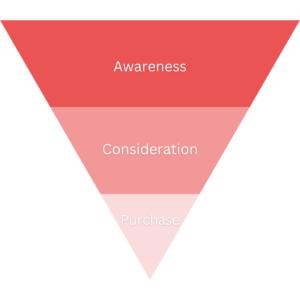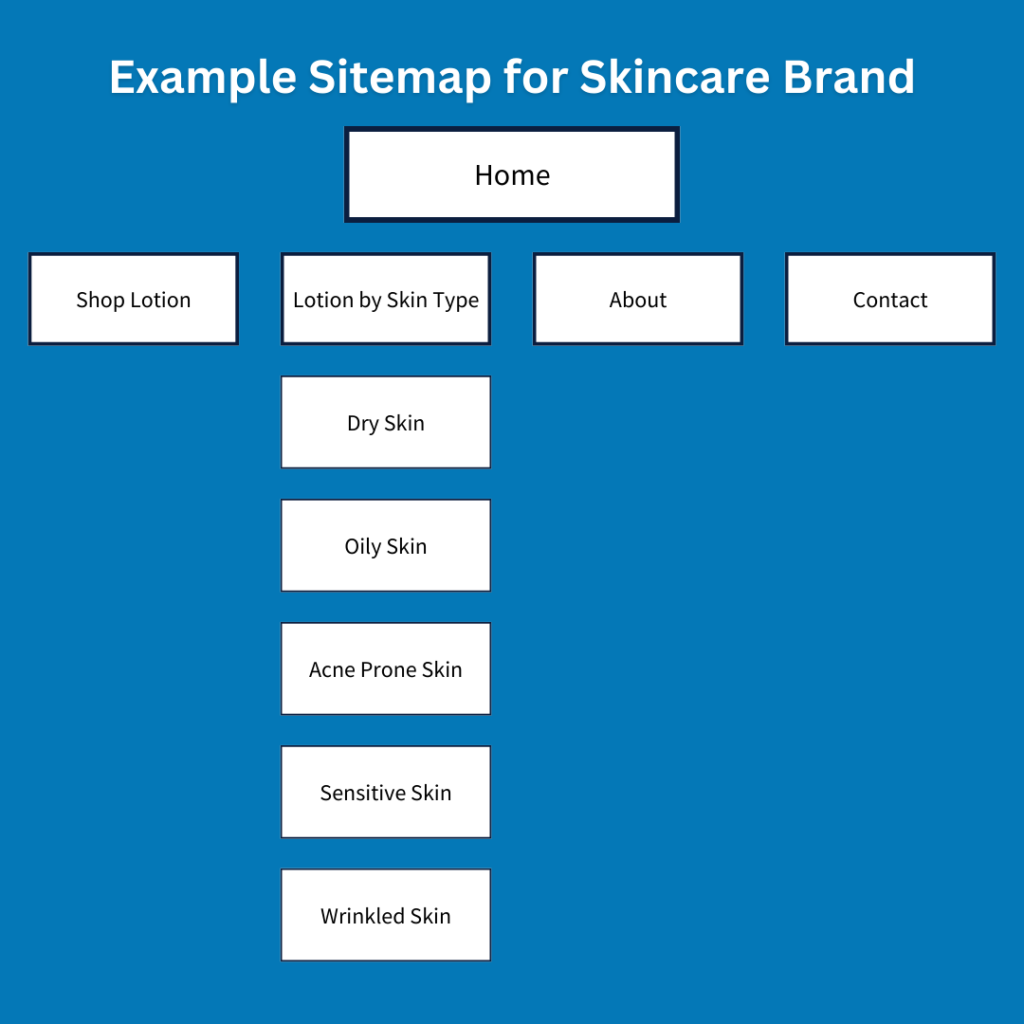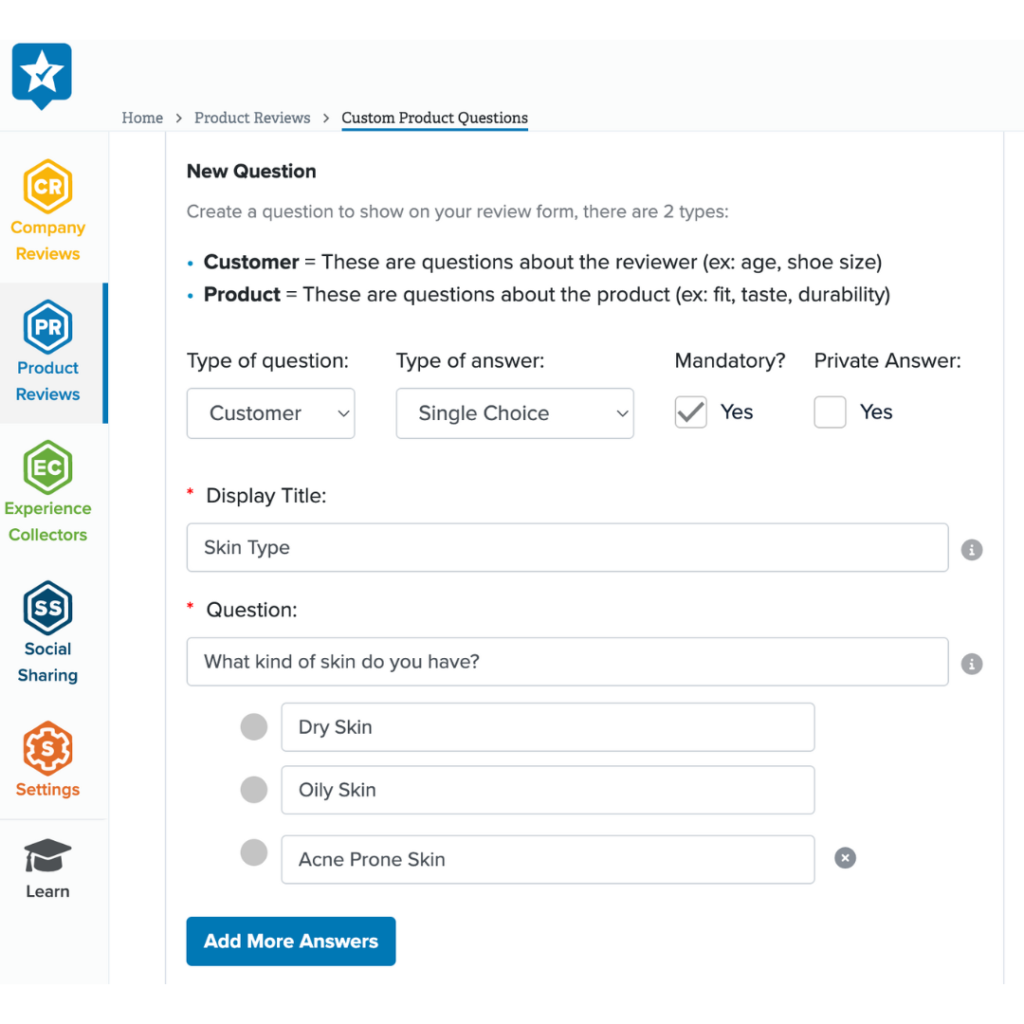Want to capture hot leads? Attracting long-tail keyword traffic is an SEO strategy used to draw leads with heightened purchase intent to your webstore.
What are long-tail keywords? Long-tail keywords are groups and combinations of keywords entered into a web search.
Examples of long-tail keyword skincare searches:
- Affordable anti-aging cream for sensitive skin
- Natural anti-aging cream for oily skin
The assumption is that your lead has already done their research on the short-tail keyword (like skin cream) and now wants more specific information.
Short-tail keywords have high search volume. Most of your competitors are going to be working hard to rank for these short-tail keywords because there are so many people searching for those keywords.
Long-tail keywords have lower search volumes and therefore are considered less competitive, but you’re capturing leads much closer to the purchase stage of the buyer journey.

Because there is less competition, it means that your page has a better chance of landing on the top of your lead’s search results!
When a lead lands on your product page after a long-tail keyword search, start licking your lips, because that lead will have an abnormally high conversion rate.
Initially, you might feel intimidated by the number of potential keyword combinations that create long-tail keywords, but that’s totally normal.
For help getting started with your long-tail keyword SEO strategies for eCommerce, try the following tactics:
- Do long-tail keywords research
- Create skin condition landing pages
- Adding customer reviews to your pages
1. Do Effective Long-Tail Keyword SEO Strategies for eCommerce

- Create a spreadsheet that will help you keep track of these long-tail keywords.
- Go to Google’s search bar and type your product or product category. Start adding the words “for” and “and” to the end of your search and check out Google’s long-tail auto results. Are there any demands that your product could meet?
- Another Google search bar trick for Google’s auto search results ! Type in your product and play the alphabet game. Start typing in letters alphabetically, “skincare for dry skin A,” “skincare for dry skin B,” “skincare for dry skin C,” and so on. Can your product compete for these searches?
- If you’re using an internal search app like Searchanise, you can easily find leads/customers’ search queries on your site. Take the time to review those searches! Not all customers are typing in your products word for word. Chances are other leads are typing those same phrases into Google.
- Using Google Analytics or Google Search Console, review the organic searches that have already brought you traffic. Don’t worry about the obscure or irrelevant search terms, try to find long-tail keywords with a small but steady stream of traffic.
2. Create Landing Pages That Target Skin Types
There’s a new, popular term in the SEO world, product led SEO. Product led SEO has been popularized by Eli Schwartz, an accomplished SEO strategist.
In short, product led SEO strategy means creating as many pieces of comprehensive content about your product as possible. The idea is to create landing pages for each meaningful product benefit and landing pages about who your product serves.
An easy way to get started with product led SEO for skincare is creating a landing page for each skin type.
- Oily skin
- Dry skin
- Acne prone skin
- Sensitive skin
- Etc.
Creating landing pages for skin types helps you rank for long-tail keywords like:
- Organic lotion for sensitive skin
- Sunscreen moisturizer for dry skin
The same idea could apply to shampoo with hair and scalp type:
- Color treated hair
- Curly hair
- Straight hair
- Hair loss
- Dry scalp
- Itchy scalp
You would then create landing pages for each of the hair and scalp types. That would help you rank for long-tail keywords like:
- Best conditioner for color treated hair
- Shampoo that will help an itchy scalp
Creating a lot of comprehensive landing pages can be labor intensive. It’s a good idea to create templates for these product led SEO landing pages. There’s no need to reinvent the wheel for every page.
Each of these landing pages should link back to a parent page that’s displayed in your header or footer. This helps Google understand your site structure. In the examples above, the parent pages would be:
- Skin Type
- Hair and Scalp Type
If you were to visualize your site map, you would see that product led SEO creates depth under these parent pages.
Here’s a simple, visual sitemap of a sample skincare company.

You can research and visualize your competitors’ sitemaps with for free with Octupus.do’s visual sitemap generator. Visual sitemaps help you identify where your competitors are focusing their content creation.
3. Add Customer Reviews To Your Landing Pages
Typically customer reviews come in the form of general reviews about your company (company reviews) or reviews about specific products (product reviews). We’re going to be focusing on product reviews.
When you ask a customer to give you a product review, don’t settle for just a star rating. You want context and content!
How should I ask for customer context and feedback?
Your question should seek out answers to provide insight for future customers. When you ask a customer to review your skincare product, you should ask for your customer’s skin type.
The questions you ask your customers in your review requests depend on your product category. For example, if you sold tires, you should ask customers to provide their car’s make and model.
The added context helps your potential customer make a personal connection with a customer’s review:
“Ohhh, this customer has dry skin and they say this lotion worked really well for them. I have dry skin! Maybe it will work for me?”
It’s best to use a review software so you don’t have to manually email each of your customers. Your review software will need to have the ability to create custom review questions, like “what’s your skin type?” Again, context is really important here. You aren’t just asking for a star rating.
RaveCapture makes asking custom review questions really easy. Easy like Sunday Morning easy.

You’ll also want your customer to provide as much written information about their product experience as possible. You can insert your customer’s feedback on your product page and Google will crawl the text!
If you send out enough review requests, eventually you will have customers write descriptive reviews full of long-tail keywords about their experience with your skincare product, like:
“I found it really difficult to find the right kind of cream for my oily skin until I found Skincare Company. Skincare Company’s cream is super affordable too so it fits into my budget.”
In addition to Google crawling your customer’s awesome feedback, leads will also feel more comfortable with the additional social proof.
If you would like to take a closer look at RaveCapture, we’re happy to walk you through a demo, or you can sign up for a free trial!
